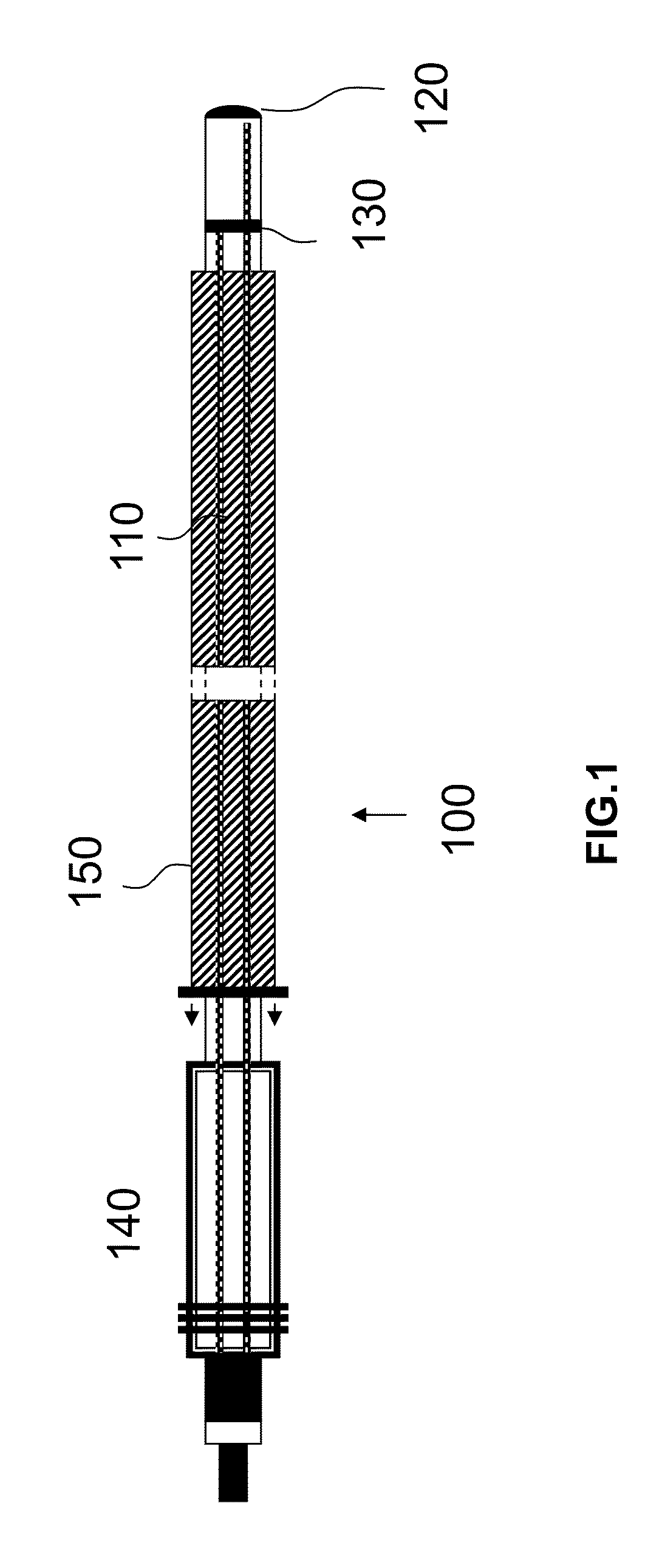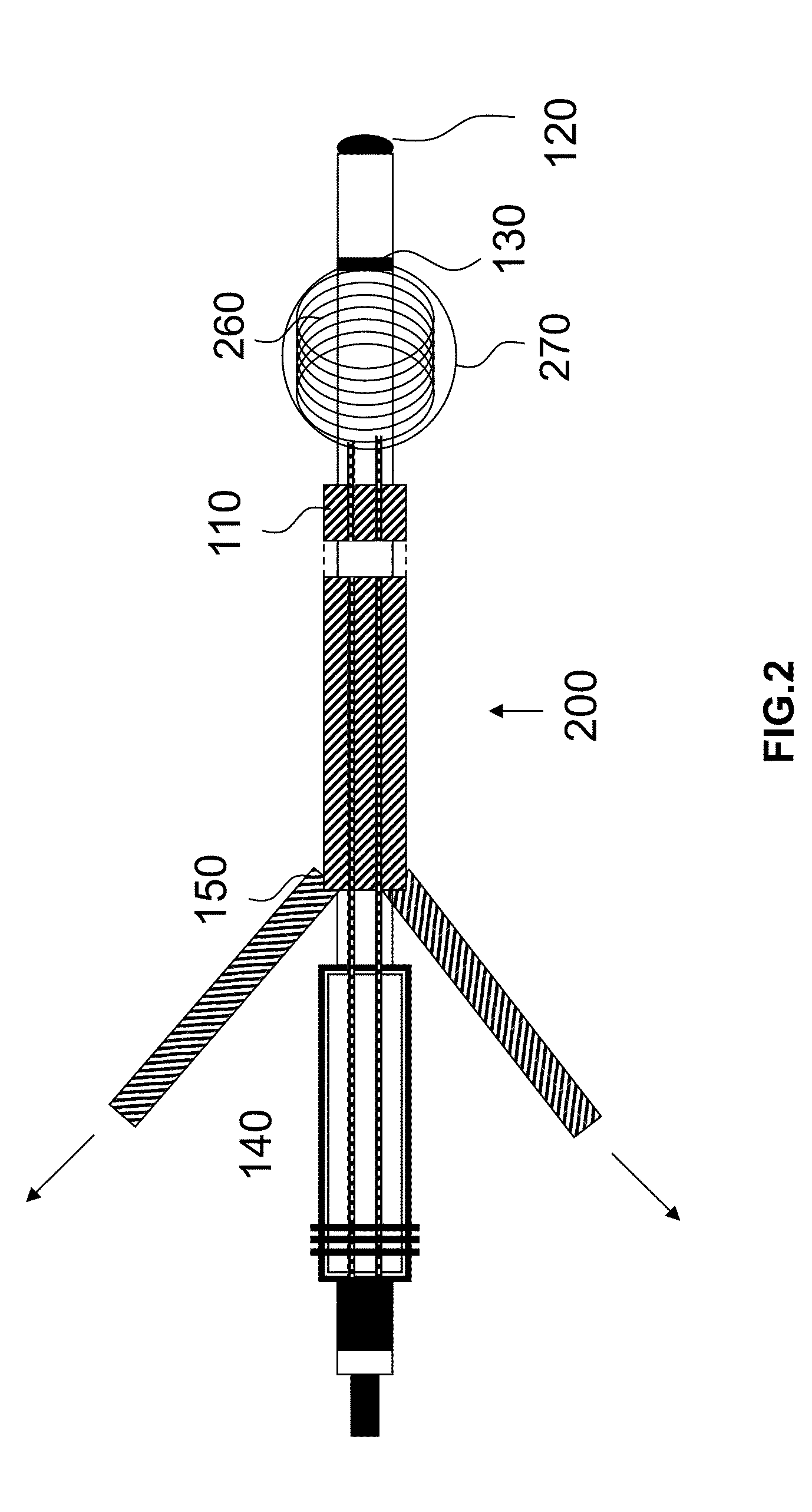Implantable electrode lead
a technology of electrode lead and electrode elongation, which is applied in the direction of internal electrodes, transvascular endocardial electrodes, therapy, etc., can solve the problems that patients with cardiac pacemakers the electric lead thereof can heat up in nuclear, and the patient's cardiac pacemaker typically cannot be examined in nuclear resonance tomographs. only to a limited exten
- Summary
- Abstract
- Description
- Claims
- Application Information
AI Technical Summary
Benefits of technology
Problems solved by technology
Method used
Image
Examples
Embodiment Construction
[0031]FIG. 1 shows an electrode lead 100 according to the invention, before implantation. The electrode lead 100 comprises an insulated supply lead 110 or jacket, a bipolar electrode pole (tip: 120, ring 130) and a corresponding connector or connecting plug 140 and an insertion aid 150 to be used temporarily, in order to create an elongated shape upon implantation. In the example shown, this insertion aid 150 is designed as an introducer sheath or tube over the electrode lead. Alternatively, however, a rigid stylet or a mandrel can be used.
[0032]In FIG. 2, the electrode lead is shown upon completion of the implantation. In addition to the features stated in FIG. 1, a deformable supply lead section 260 of the electrode lead is now shown. In this embodiment, the deformable supply lead section forms a coil in the distal region of the electrode lead having a diameter of 3-15 mm. The altered shape of the deformable supply lead section 260 is induced either by way of a preformation of a j...
PUM
 Login to View More
Login to View More Abstract
Description
Claims
Application Information
 Login to View More
Login to View More - R&D
- Intellectual Property
- Life Sciences
- Materials
- Tech Scout
- Unparalleled Data Quality
- Higher Quality Content
- 60% Fewer Hallucinations
Browse by: Latest US Patents, China's latest patents, Technical Efficacy Thesaurus, Application Domain, Technology Topic, Popular Technical Reports.
© 2025 PatSnap. All rights reserved.Legal|Privacy policy|Modern Slavery Act Transparency Statement|Sitemap|About US| Contact US: help@patsnap.com



